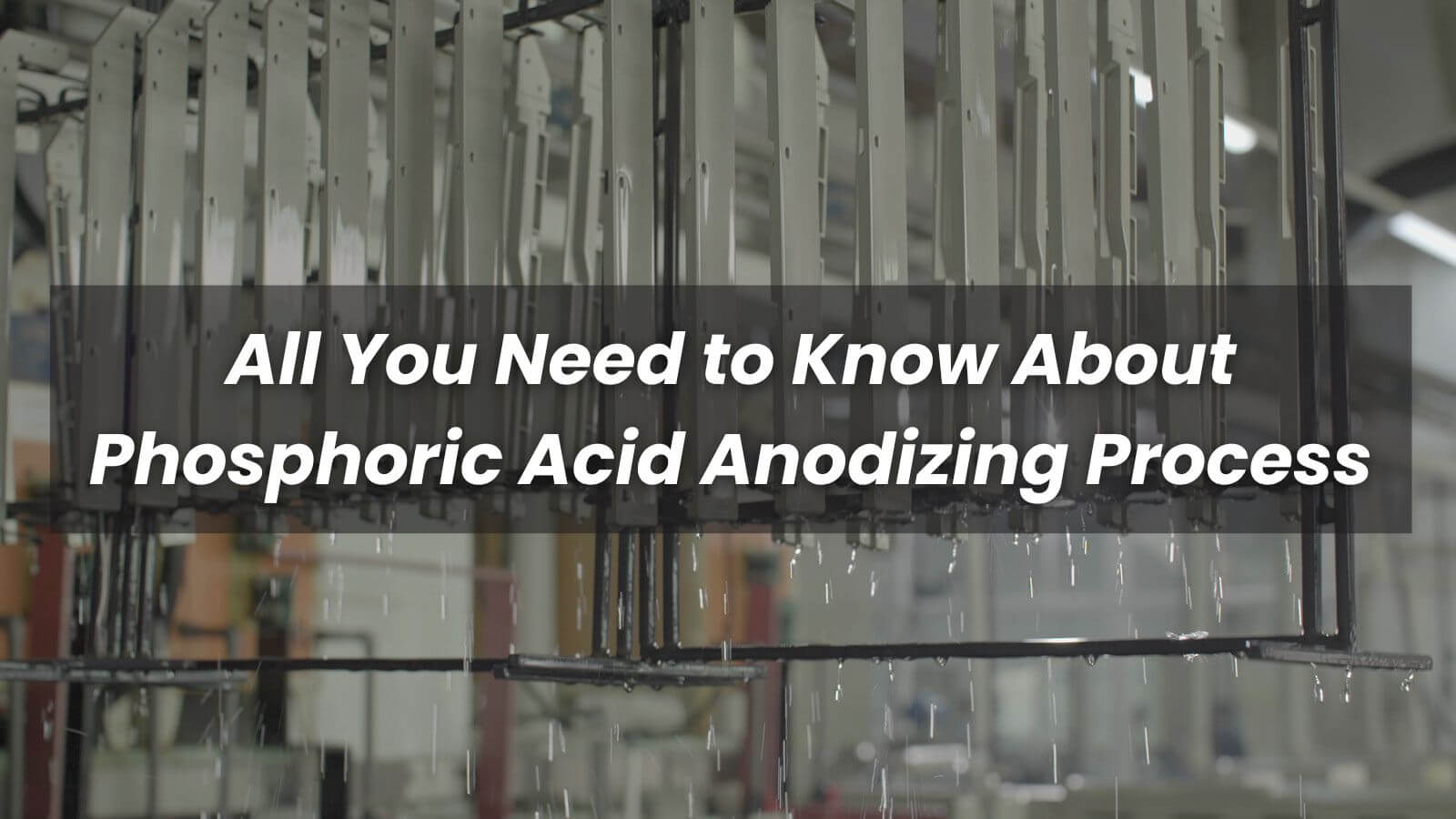CNC Machining
200 sets high precision CNC machine, covering turning, drilling, milling, broaching,grinding, wire EDM etc. all machining process.Machined prototypes and production parts in as fast as 1-3 days

Phosphoric acid anodizing is a process used to create a protective oxide layer on the surface of a metal, typically aluminum or titanium. The process involves immersing the metal in an electrolyte solution containing phosphoric acid and applying a direct current to the metal.
The anodizing process occurs when the metal becomes the anode, or positive electrode, in the electrolyte solution. As a result of the applied current, oxygen ions from the electrolyte solution are attracted to the metal surface and are incorporated into the oxide layer. The oxide layer that forms as a result of this process is harder and more wear-resistant than the metal itself.
Phosphoric acid anodizing is commonly used to improve the corrosion resistance and wear resistance of metal parts, as well as to improve their appearance by adding color. It is particularly useful for aluminum and titanium alloys, which are prone to corrosion and have low wear resistance.
Some specific applications of phosphoric acid anodizing include:
Phosphoric acid anodizing is used to improve the corrosion resistance of aircraft components, such as landing gear, wing panels, and engine components.
Phosphoric acid anodizing is used to improve the corrosion resistance and wear resistance of automotive parts, such as wheels, brake calipers, and suspension components.
Phosphoric acid anodizing is used to improve the corrosion resistance and wear resistance of medical instruments and implants, such as orthopedic screws and bone plates.
Phosphoric acid anodizing is used to improve the corrosion resistance of marine components, such as propellers, rudders, and hull fittings.
Phosphoric acid anodizing is used to improve the corrosion resistance and appearance of metal components used in construction, such as handrails and structural beams.
There are several advantages to using phosphoric acid anodizing to improve the surface properties of metal parts:
The oxide layer that is formed during the anodizing process is highly resistant to corrosion, making it an effective way to protect metal parts from the damaging effects of exposure to moisture and other corrosive substances.
The oxide layer that is formed during the anodizing process is also harder and more wear-resistant than the metal itself, making it an effective way to improve the wear resistance of metal parts.
Phosphoric acid anodizing can be used to add color to metal parts, improving their appearance and making them more visually appealing.
The oxide layer that is formed during the anodizing process provides an excellent bonding surface for adhesives and other coatings, making it an effective way to improve the bonding strength of metal parts.
Phosphoric acid anodizing is a relatively low-cost process compared to other surface treatment methods, making it an attractive option for many manufacturers.